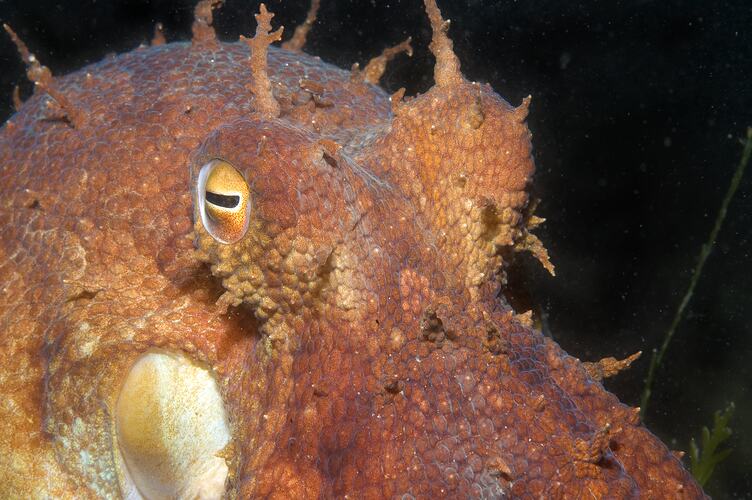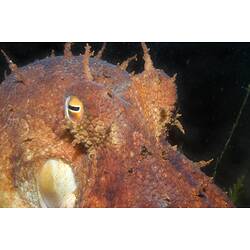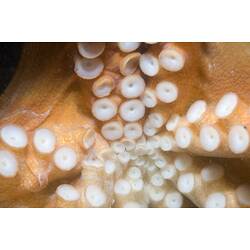General Description
Robust, muscular octopus with short arms. Numerous regular pavement-like patches over entire body and arms. Pointed and branched fingers of skin can be raised on its body, head and above its eyes. Lacks the skin ridge (keel) of the Southern Keeled Octopus, Octopus berrima, with which it is often confused. Mantle length to 15 cm, total length to around 54 cm.
Biology
This octopus occurs on sand and mud substrates, often in association with sponge gardens or beds of large solitary sea squirts. Its diet consists mainly of bivalves, which are pulled apart or drilled. It emerges at night to feed, hiding during the day in rubble or human refuse (such as bottles). This octopus lays large eggs that are attached singly to the roof of crevices or discarded bottles. The well-developed hatchlings already have good skin sculpture and camouflage. They crawl away after hatching and immediately start to forage. This octopus was previously harvested in Port Phillip in baitless pot fisheries. It was sold for human consumption and used as bait.
Distribution
South-eastern Australia.
Habitat
Sand or mud substrates, often in sponge gardens or tunicate beds, to a depth of at least 600 m.
More Information
-
Animal Type
-
Animal SubType
-
Brief Id
8 arms, skin may have raised pointed and branched papillae, pavement-like patterned skin.
-
Maximum Size
54 cm
-
Habitats
-
Diet
Carnivore
-
Hazards
Potential to bite, especially if handled. Venom status unknown.
-
Endemicity
-
Commercial
No
-
Conservation Statuses
CITES: Not listed, FFG Threatened List: Not listed, DSE Advisory List: Not listed, IUCN Red List: Least Concern
-
Depths
Shallow (1-30 m), Deep ( > 30 m)
-
Water Column Locations
On or near seafloor
-
Taxon Name
-
Scientific Author
Hoyle, 1885
-
Common Name
Pale Octopus
-
Phylum
-
Class
-
Subclass
-
Order
-
Suborder
-
Family
-
Genus
-
Species Name
pallidus



